
- Home
- India
- World
- Premium
- THE FEDERAL SPECIAL
- Analysis
- States
- Perspective
- Videos
- Sports
- Education
- Entertainment
- Elections
- Features
- Health
- Business
- Series
- In memoriam: Sheikh Mujibur Rahman
- Bishnoi's Men
- NEET TANGLE
- Economy Series
- Earth Day
- Kashmir’s Frozen Turbulence
- India@75
- The legend of Ramjanmabhoomi
- Liberalisation@30
- How to tame a dragon
- Celebrating biodiversity
- Farm Matters
- 50 days of solitude
- Bringing Migrants Home
- Budget 2020
- Jharkhand Votes
- The Federal Investigates
- The Federal Impact
- Vanishing Sand
- Gandhi @ 150
- Andhra Today
- Field report
- Operation Gulmarg
- Pandemic @1 Mn in India
- The Federal Year-End
- The Zero Year
- Science
- Brand studio
- Newsletter
- Elections 2024
- Events
Lights, sound, camera, propaganda: What films in poll season can achieve

As the all-important 2024 Lok Sabha polls slowly descend upon us, a categorical change in the Indian pop-cultural diet is apparently in motion. Moviegoers across the country are likely to have already spotted this trend that beckons to them not for the first time, as Prime Minister Narendra Modi and Co. make strong strides for that hattrick win at the elections and opposition gears up to stall...
As the all-important 2024 Lok Sabha polls slowly descend upon us, a categorical change in the Indian pop-cultural diet is apparently in motion. Moviegoers across the country are likely to have already spotted this trend that beckons to them not for the first time, as Prime Minister Narendra Modi and Co. make strong strides for that hattrick win at the elections and opposition gears up to stall PM Modi’s march.
Of course, this trend or 'shift', refers to the wide array of polarising and agitprop films that are making their way out to the box office. If the 2019 polls were flanked by the likes of The Tashkent Files, Uri: The Surgical Strike, The Accidental Prime Minister and the biopic PM Narendra Modi, the past few months have brimmed with a mixed crop of provocative and conjectural films alleged to be derived either from real-life incidents or individuals.
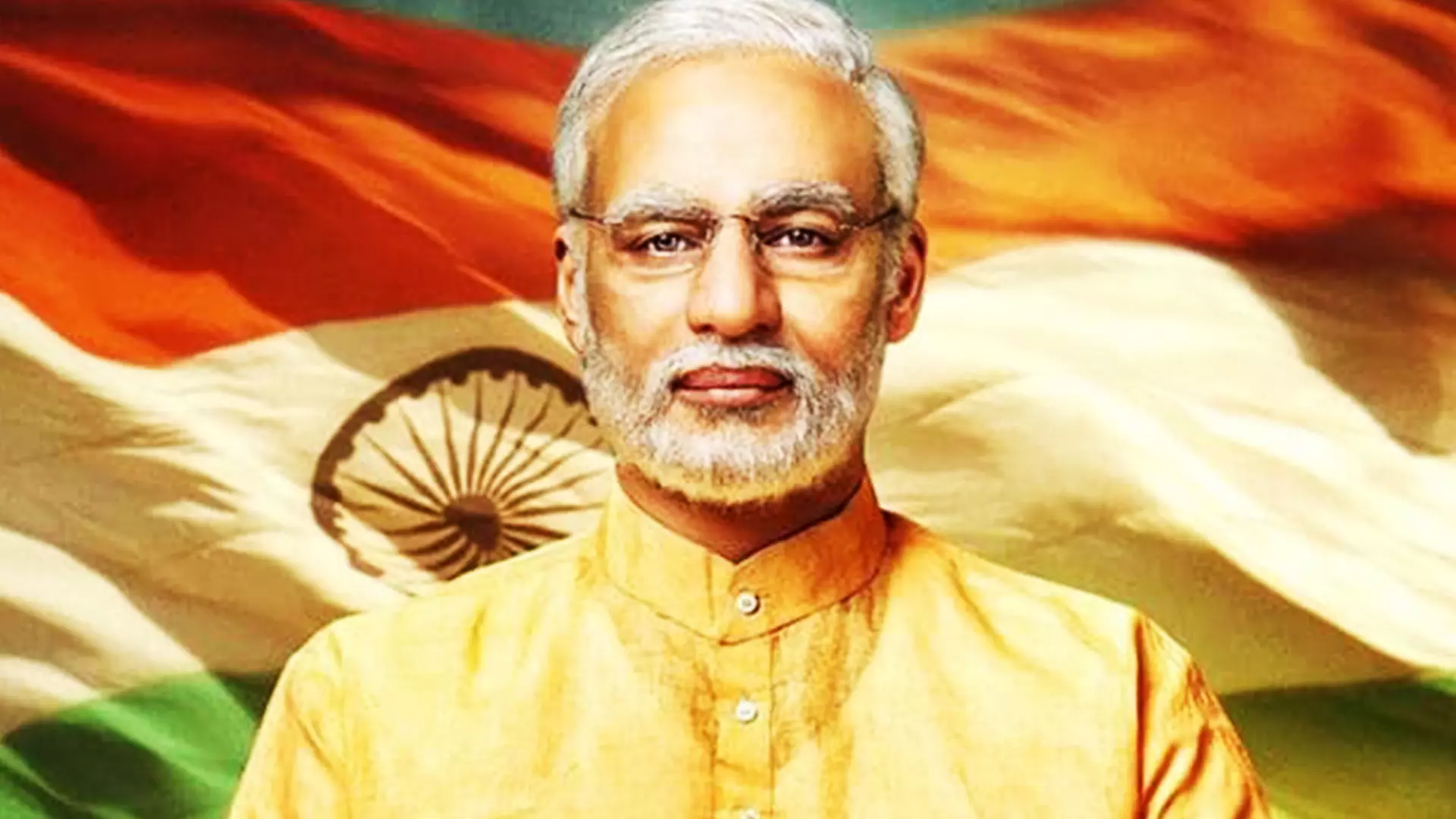
The Modi biopic released in 2019.
Largely devoid of nuance, objectivity and even artistic flair and courage to an extent, films like The Kerala Story (2023), The Kashmir Files (2023), Bastar: The Naxal Story (2024), JNU: Jahangir National University (2024), Razakar: The Silent Genocide of Hyderabad (2024) and many more in the pipeline fervently attempt to hammer down the ruling party's central idea. Propaganda, as both a concept and an approach, has been normalised a great deal as films centred on complex and poignant issues — from the Hindu-Muslim discord to the socio-political conundrums of regions like Jammu & Kashmir — are being grossly simplified in the mainstream.
These films, though, are intriguingly spread across a range of topics. If titles such as The Kashmir Files, The Kerala Story and Razakar are pegged on the anti-Muslim narrative and to further fuel the Islamophobic fire, a film like JNU: Jahangir National University (due to release in theatres on April 26, less than two weeks before the elections) attempts to unfairly homogenise and brand students and faculty of the Jawaharlal Nehru University as anti-national conspirators. The makers of Bastar: The Naxal Story call themselves ‘the brave storytellers of The Kerala Story’ in the film’s teaser and allude that the bigger enemy of the country lies not across the border but perhaps within its periphery in the form of Maoists/Naxalites.
“The essence of propaganda is just that,” says independent journalist and author Kunal Purohit. “It (propaganda) breaks down very complicated, complex issues into a very easy, digestible and bite-sized consumable item.”
The Bharatiya Janata Party's self-proclaimed triumphs in the state of Jammu & Kashmir too have been subjects of mainstream Bollywood/Indian films. Aditya Dhar's 2019 film URI: The Surgical Strike (2019) bombastically celebrated the Indian Army’s retaliation to the Uri Attacks that tragically killed 19 Indian soldiers in September 2016. Article 370 (2024), co-written and co-produced by Dhar and directed by Aditya Suhas Jambhale, wholeheartedly hands BJP and PM Modi's government the credit for stabilising the state of Jammu and Kashmir, following the revocation of its special status.
In the same vein, Bollywood looks forward to the release of "fact-based" films like Accident or Conspiracy: Godhra, The Sabarmati Report and Kangana Ranaut's directorial debut Emergency. These self-explanatory titles endeavour to dig deep into real-life events and unveil the truth.
What's more fascinating is that a lot of these films also carry undercurrents or micro-narratives. In Randeep Hooda's Swatantrya Veer Savarkar, Mahatma Gandhi is rendered a pitiful and unimpressive pacifist who is soft on the British and preferential towards Indian Muslims. Jawaharlal Nehru and other core members of the Indian National Congress are parodied in multiple other films whereas PM Narendra Modi and stalwarts of the BJP fare flatteringly through their fictionalised versions.
"The blatant ones aside, it's the soft positioning of the right-wing ethos that's more worrying," notes Bindu Menon, a professor of Film Studies at Azim Premji University. Films like Ram Setu (2022), Samrat Prithviraj (2022), Tanhaji: The Unsung Warrior (2020) and several others have been pulled up by critics for using Hindu mythology as an inflammatory tool.
'The age of the narrative'
It's interesting to note that perhaps not every flagrantly propagandist film has worked as intended. There is, of course, the commercial vantage point to gauge a film's success and also the cultural, potentially long-term, impact it casts on the public. If The Kashmir Files and The Kerala Story are the poster children of this phenomenon, then one wonders what significance the Bastars, the Savarkars and the Vaccine Wars hold in its burgeoning.
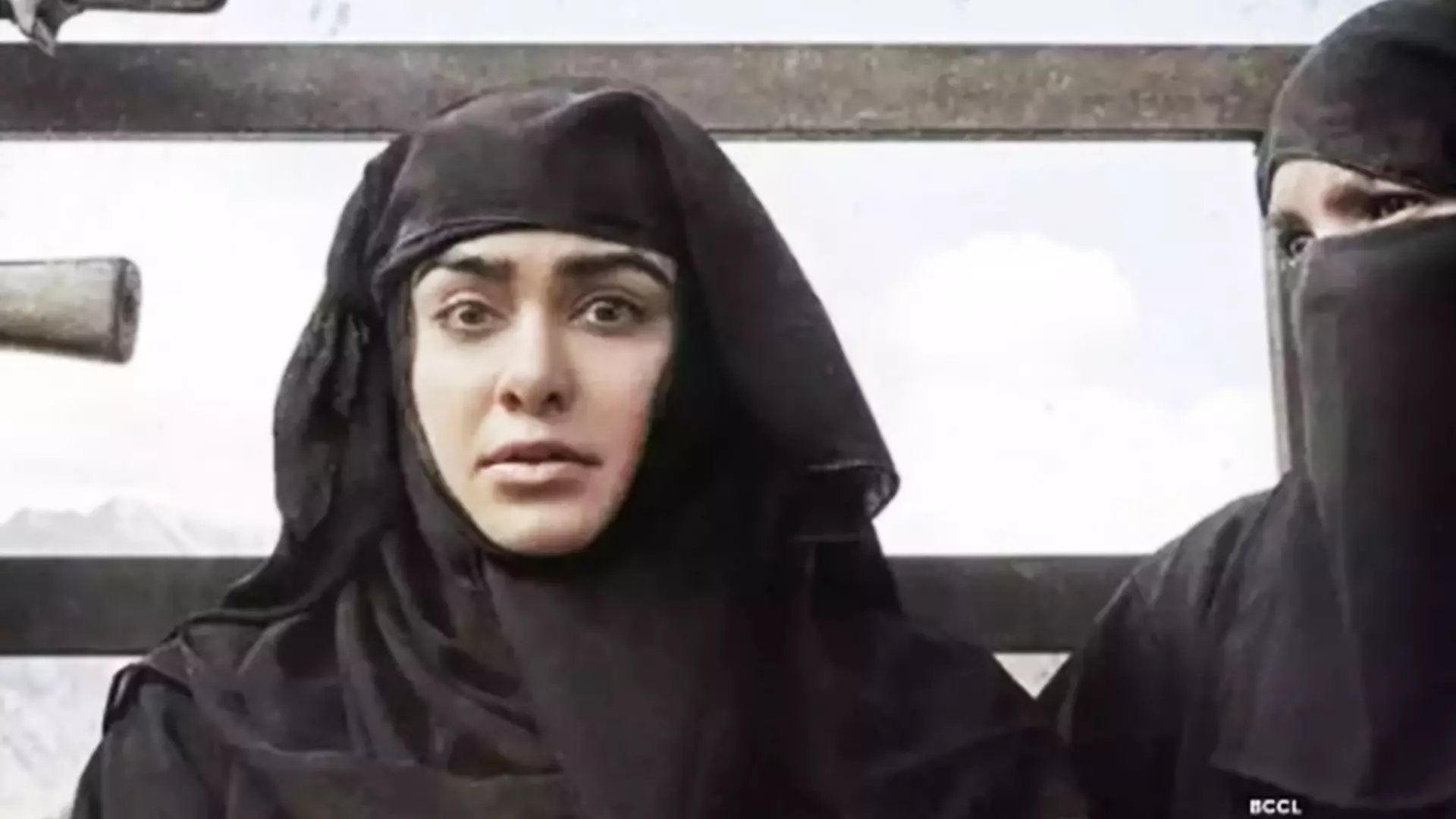
The BJP itself promoted The Kerala Story.
Why does Vivek Agnihotri score a colossal hit with The Kashmir Files but fails to reap similar rewards with The Vaccine War? Director Sudipto Sen faced a similar conundrum with his twin attacks, The Kerala Story and Bastar: The Naxal Story, wherein the former grossed over Rs 300 crore worldwide and the latter hit the dumps pretty fast. What's the differentiator in both cases, given that every single film is billed to be 'eye-opening'? Is anti-Muslim the only theme that's commercially viable at this point? And what do we make of biographical accounts like Thackarey, PM Narendra Modi, Main Atal Hoon and Swatantrya Veer Savarkar? Why haven't they made money, to put it bluntly?
"I think the age of the narrative matters a lot here," says Kunal Purohit. The ‘narrative’ he refers to is the subject or the insinuatory topic, be it social, religious or political, that a film picks. And the older the topic or the narrative, he suggests, the more inflammable it is.
The Kashmir Files, The Kerala Story, and Article 370, to an extent, work almost entirely on this premise because the Hindu-Muslim question has persisted among us for vast amounts of time. The former two films have faced criticism for prodding Islamophobia and spreading baleful conspiracies against a community in various territories. Despite all that, they have received tax rebates and loud pats on their backs from the centre, and were also propagated in multiple areas of the country through free screenings organized by BJP ministers and leaders. Prime Minister Narendra Modi himself has endorsed and appreciated all three films.
"In the case of films like Bastar, the core narrative of the film hasn't been around for that long," Purohit says. "People get to see text messages and social media posts around those topics but they don't have anywhere close as wide a resonance as the narrative on Kashmiri Hindus' plight or that of Hindu girls being lured by Muslim men."
While a film like The Kerala Story sticks out as an anomaly in this discussion about box-office success, Agnihotri's The Kashmir Files is far from being a fluke. The filmmaker has been busy targeting and vilifying Leftists, liberals and dissenters of the state, in general, for many years; if his 2018 book Urban Naxals: The Making of Buddha in a Traffic Jam claims that liberalists are hand-in-glove with Naxals to overthrow the state, his 2019 film The Tashkent Files labels NGOs, academicians, the media and even the judiciary as different kinds of terrorists.
That is to say that Vivek Agnihotri has paved the way for himself over many years and subsequently, the timing of the release of The Kashmir Files worked in his favour as well. "We saw the demonization of Muslims during Covid-19 and then comes this film," points out Kunal Purohit. On top of this, one gathers that other factors like the furore against nepotism in Bollywood around the same time seem to have further encouraged audiences to watch the film, given that a majority of the anti-Bollywood framework employs a self-grown and lesser-known talent pool.
'Political figure pe picture nahi chalti'
But would it be fair to term every propaganda film fallacious and inaccurate? Or does a film like The Kashmir Files, despite the intent behind its making and its eventual cultural impact, utilise a valid argument to a certain degree?
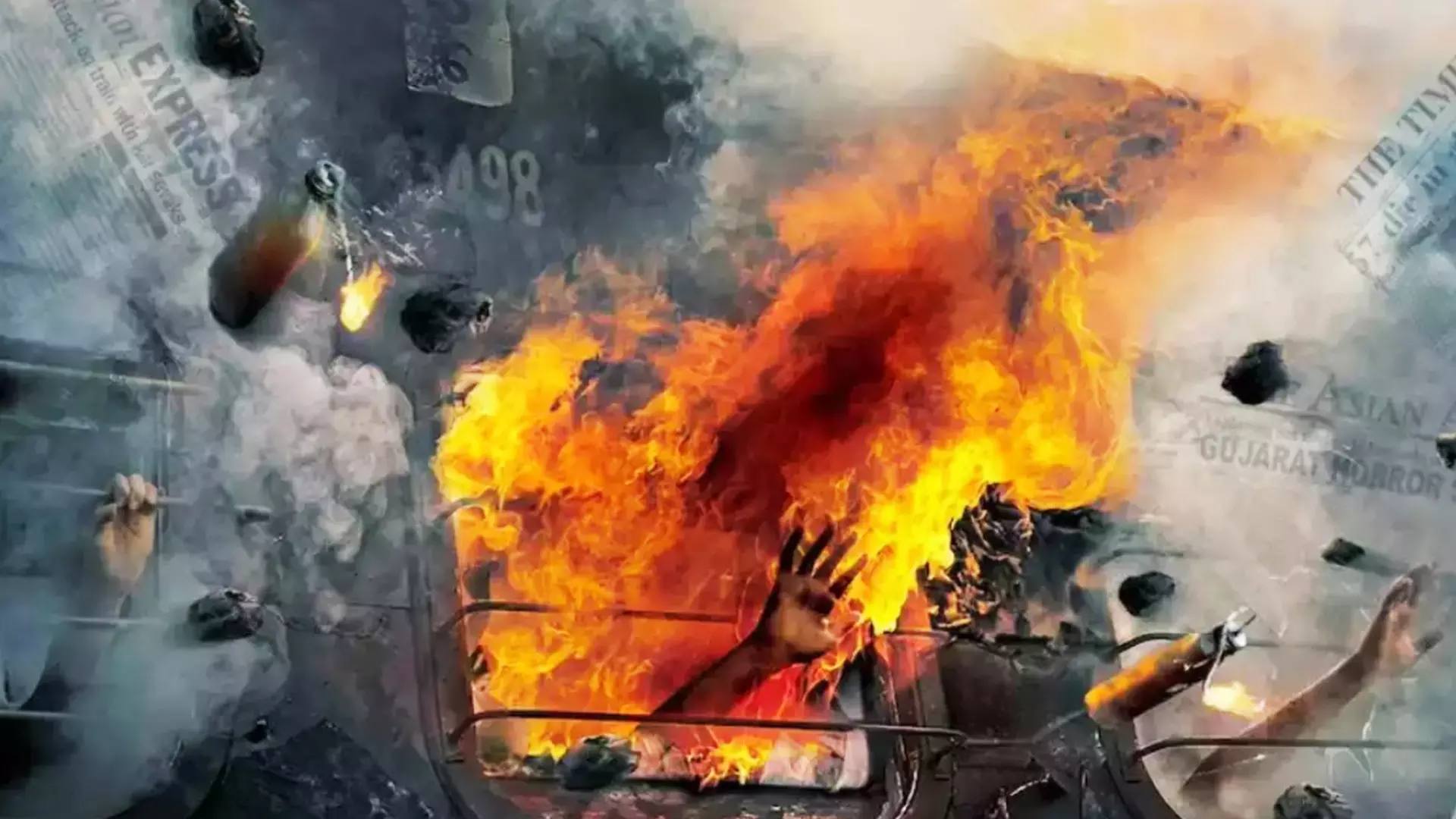
Accident or Conspiracy: Godhra, The Sabarmati Report is yet to be released.
"Some of it is extremely valid - how Kashmiri Hindus were treated, the silence of the establishment or the fact that the majority of the Kashmiri population, which is the Muslim community, didn't do enough to stop the exodus," says Purohit. "And these concerns were building over time and then bang comes a film that depicts to you in full graphic detail just what that moment looked like."
Even within the trade or commerce purview, the validness of the subject it tackles is what seems to have carried The Kashmir Files to glory. “Almost everyone knows about the exodus and what happened in Kashmir,” says Atul Mohan, a well-known trade analyst and editor of the trade magazine Complete Cinema. Atul Mohan concurs that the conversation around the insurgency and Kashmir, as an entity, finds relevance because it has been around across multiple generations. What also benefitted Vivek Agnihotri, he adds, is a very well-made film.
"It was a really well-documented film about how ruthless the insurgents were. If I simply tell you today that so many people were killed somewhere, you may not react with a lot of passion. But if a film shows you exactly how it happened, then you feel many emotions at a time including anger, sadness and even hate."
When looked through the objective lens, there seems a definite method to this madness. Atul Mohan suggests that even though The Kerala Story isn’t much of a credible effort when it comes to cinematic parameters, the curiosity surrounding its subject lured audiences regardless. But simultaneously being labelled a full-blown propaganda film might have antagonised its makers, he adds. “Once you are put in that bracket, things become difficult.”
Similarly, films like The Vaccine War come with their own set of challenges and Atul Mohan brings Anubhav Sinha’s Bheed into discussion. “The Covid-19 lockdowns are still extremely fresh in our memories. Nobody wants to revisit that time, especially after spending money on a movie ticket”. Entertainment, still, remains paramount for the viewer, he says.
Consequently, biopics like Thackarey, Main Atal Hoon and Swatantrya Veer Savarkar, which draft the rise and only the rise of talisman figures Bal Thackeray, Atal Bihari Vajpayee and VD Savarkar and their respective labours towards Hindu nationalism in India. These films host some of the best actors of the current era but that does not mean their films will yield collections, says Atul Mohan, and except for Richard Attenborough’s Gandhi, no film on an Indian political figure has worked thus far.
“When you think of a film on a political icon, you think a lot of bhaashan-baazi. And the country is divided even before the film is released - some like Jawaharlal Nehru, others do not.”
‘Refuse, reuse and recycle’
A film’s longevity or shelf-life isn’t necessarily decided by its box office success, says Purohit.
The observation holds a lot of merit considering Purohit, through his book H-Pop: The Secretive World of Hindutva Pop Stars, traces how Hindutva is percolating into our social consciousness through popular culture tools like poetry, music and literature. His book reveals that much like cinema, the other pop-culture avenues are empowered by a legitimate system comprising pro-Hindutva singers, poets, authors, record labels, studios, publishers and the whole gamut, with social media playing as big a role in the demonising of certain minority groups.
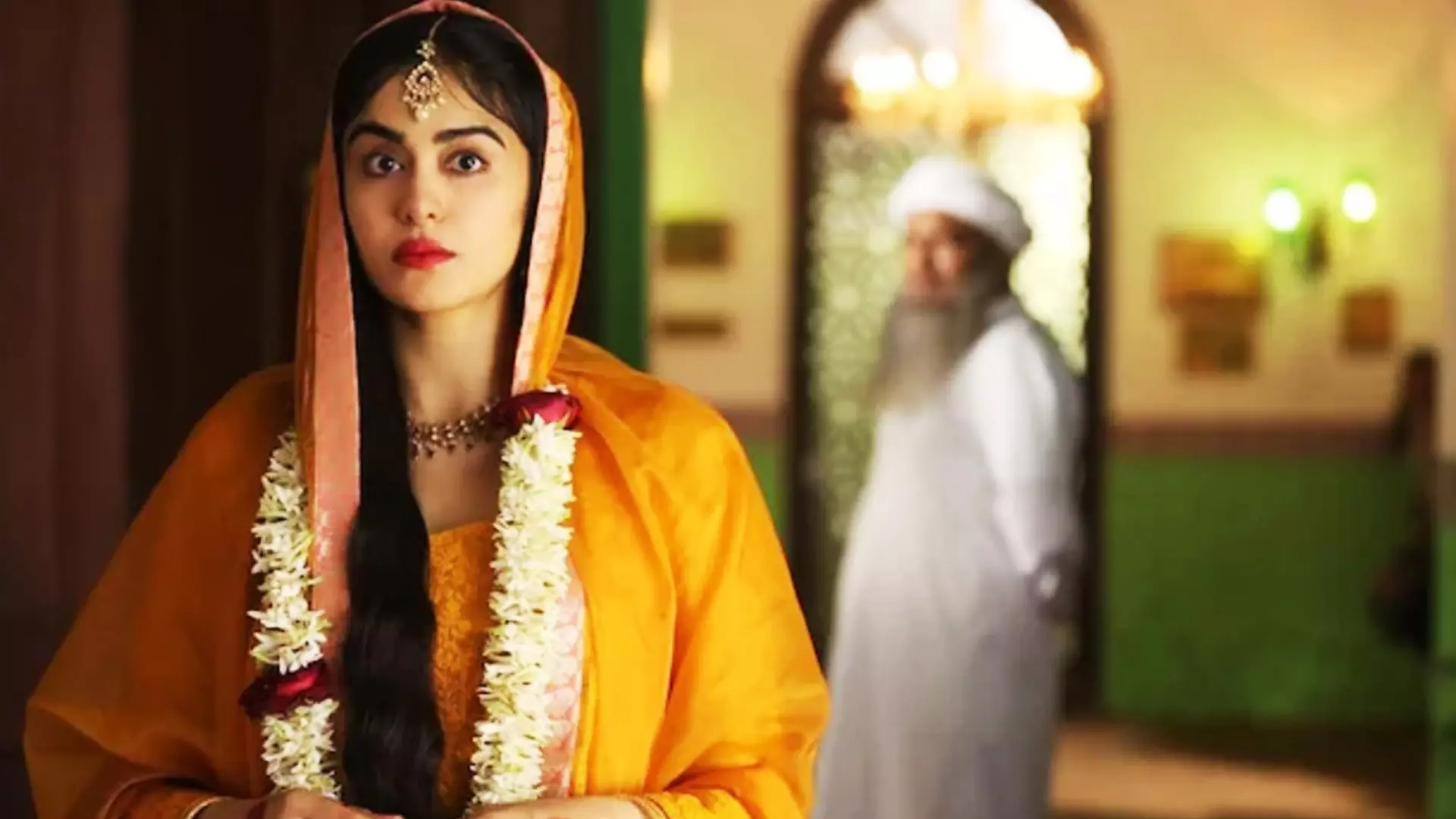
A still from The Kerala Story.
As far as cinema is concerned, it isn’t just the free screenings, the personal endorsements of bigwigs that get the job done - smaller, clandestine players could be in cahoots through memes, reels and whatnot. Far from the mainstream arc lights, as Kunal Purohit notes, there exists a bustling world that is valiantly putting digital media to use. And these players aren’t necessarily in support of the Bharatiya Janata Party but could be Hindutva proponents in general.
“You see a film of a certain divisive nature being recirculated and almost recycled in so many different ways,” Purohit says. “For instance, the box office might tell you that a Bastar: The Naxal Story hasn’t done all that well but one doesn’t know how the Hindu right-wing ecosystem takes scenes or clips with the film and recirculates in different ways and that is how it ends up reaching a wider audience.”
A particular monologue from Bastar, featuring Adah Sharma’s character Neerja Madhavan, becomes one such case in point and so do the short clips from Article 370 highlighting the ‘reel v/s real’ aspect. Several of these videos have gained thousands and even millions of views.
Has Bollywood surrendered? Or is it being silenced?
That power and hegemony manifest themselves in strange ways has indeed become the reality of the Hindi Film Industry today. The anti-establishment film, which once resided prominently in the scope of the mainstream, is slowly fading away and self-censorship has been activated by filmmakers because of fear and escalating pressure. “There is a sense of unease,” laments Ravinder Randhawa, a Hindi film screenwriter who has worked on films like Aarakshan (2011) and Pippa (2024)
An auteur such as Dibakar Banerjee is unable to bring out his film Tees with Netflix, its original maker, backing out of the deal. Tees is an intriguing and complex tale of a middle-class Indian Muslim family that spans many decades, starting from the Kashmir unrest in the late 1980s & early ‘90s and concluding in the year 2042. Banerjee is said to have completed the film in 2022 but its future looks quite bleak at the moment.
Another marquee name, Anurag Kashyap, was to adapt Suketu Mehta’s Maximum City and the project was even green-lit by the same streamer, only to be shelved later because of the book’s alleged commentary on the Hindu-Muslim tensions in the early 1990s. Kashyap has been quoted by the Washington Post that this is all a consequence of “invisible censorship” as the ruling government slowly but surely tightens its grip on entertainment as a whole.
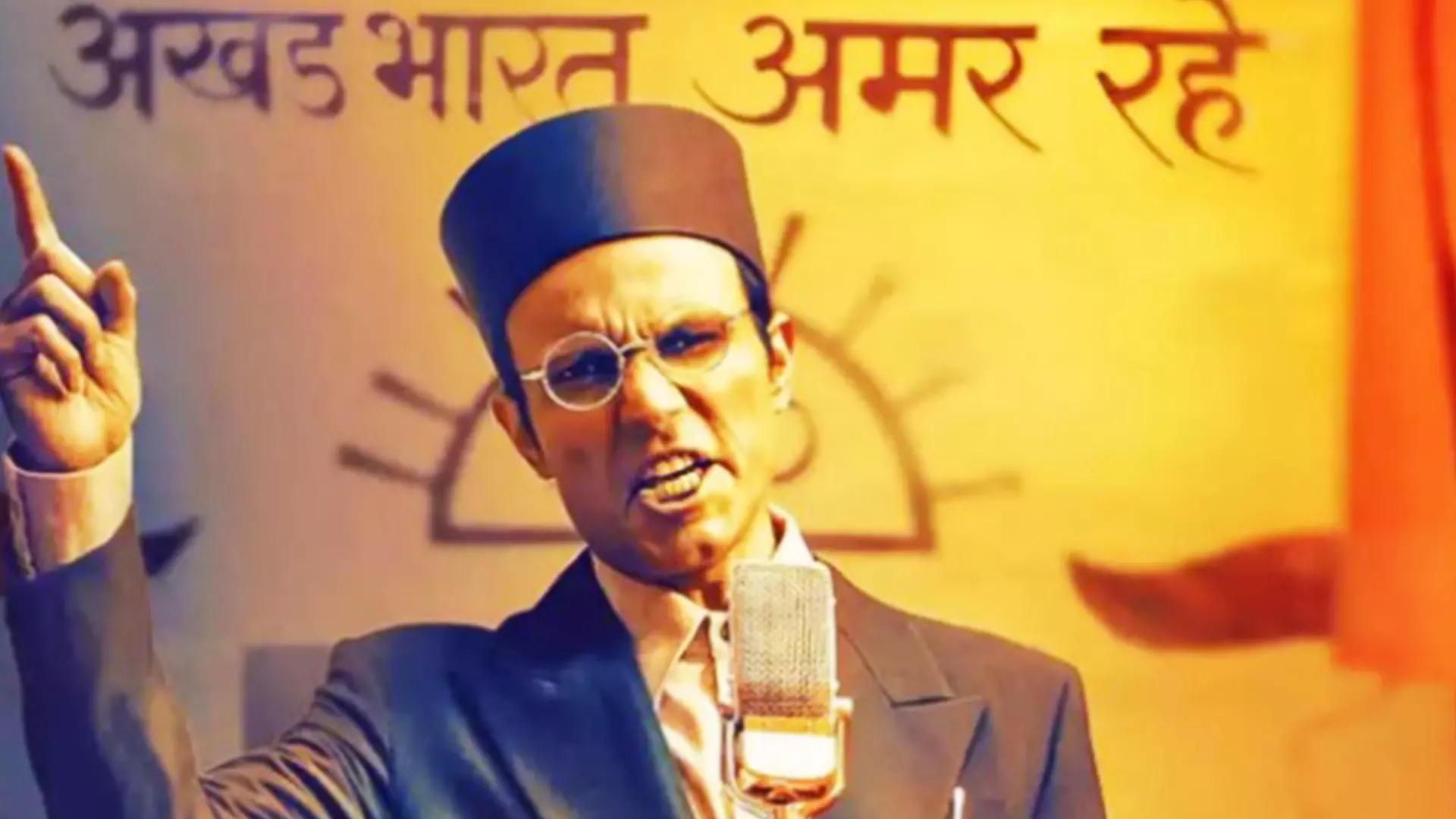
In Randeep Hooda's Swatantrya Veer Savarkar, Mahatma Gandhi is rendered a pitiful and unimpressive pacifist who is soft on the British and preferential towards Indian Muslims.
Yet, the streaming giants cannot be entirely held responsible for this phenomenon. “Almost every script written for the OTT today is vetted by lawyers,” says Ravinder, alluding to the fact that backlash is preempted well in advance by studios. In 2021, Ali Abbas Zafar’s Amazon Prime web series Tandav endured a series of troubles - trolling, online bullying, FIRs, boycotts, etc - for allegedly hurting Hindu sentiments and disturbing the social fabric. One gathers that the massive threat hurled at the show and its team members rattled the OTT ecosystem to such an effect that multiple unreported shows and films have been cancelled since then by top streamers.
What’s more worrying, Ravinder points out, is that it isn’t the corporate production house alone that’s been dissuaded, but also the independent voice. In complete contrast, a nauseatingly violent and vitriolic film like Razakar: The Silent Genocide is given almost a free pass and many such films continue to see the light of day in the current environment.
A Silver-Lining, After All
But, all said and done, there is no doubt that hope continues to prevail. Ravinder Randhawa asserts that even though there has been a surge in the number of propaganda films, the Hindi Film Industry ultimately is a victim of trends. “Hate has been industrialised and certain filmmakers have realised that you could make money out of it,” he says, adding that once the trend reveals itself to be not profitable any more, these kinds of films will stop from emerging.
Hindi Cinema, too, continues to be dogged in its own ways, though the efforts seem sparing at times in comparison to the beast that operates openly. And yet, films like Article 15, Bheed and Jawan, led by Shah Rukh Khan himself, do deal with important subjects like casteism, social apathy against labourers and corruption. Several actors such as Richa Chaddha and Swara Bhaskar have been highly vocal (though at a price) about their political stances and ideologies, whereas Deepika Padukone’s visit to the JNU, during the 2020 mob attack on students, was seen as a rare act of solidarity towards the liberal front by a superstar.
In the same positive vein, Bindu Menon, the Film Studies professor, underlines the fact that the film culture in India is sprawled across more than 100 years and the discerning mind of the viewer cannot be compromised all that easily.
"Kerala has proven this year alone with films Premalu, Bramayugam and Manjummel Boys that audiences remain undeterred as ever towards propaganda cinema," Menon says. "Even the diasporic crowd loved Pathaan and not The Kashmir Files. There is a clear demarcation between the Indian voter and the Indian moviegoer."
But the silver lining, as it were, comes not from fiction but from reality. Amid the backlash against the airing of The Kerala Story on Doordarshan on April 5, St. Joseph's Syro-Malabar Church in Sanjopuram, Vypin (Kerala) has instead opted to screen the documentary Cry of the Oppressed, based on Manipur violence, for students. The vicar of the church, Father James Panavelil, is said to have termed the story of Manipur as that of pain and hoped that the people of Kerala rejected "cooked-up stories and propaganda".
